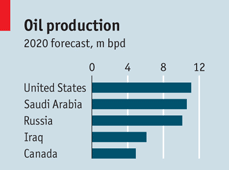At the beginning of 2013, a compromise of sorts about the US Federal deficit was reached. Modest tax rises were agreed, accompanied by a postponement of spending cuts to the end of February. In addition to this, the debt ceiling - an overdraft limit, if you like, managed by Congress - is likely to be reached in February as well. Far from reaching a consensus about the shape of American public finances, the matter was simply kicked into the long grass. We will be in the long grass in a week or two, and no real progress seems to have been made in finding a solution to the longer term problem of American deficits.
Is there a problem? There is the question of how long a government can run a perpetual deficit before it encounters a major problem. Most public debt is simply rolled forward from one generation to another. The example of France in the Sixteenth and Seventeenth Centuries suggests that public debt could be rolled forward for over 150 years. But then, it did end rather unfortunately for the French monarchy during the French Revolution. In modern times, the ability to roll forward a perpetual deficit is rather questionable because the bond markets may test this ability somewhat sooner. This is what the Eurozone found to its cost in 2012.
On the assumption that the government wishes to address the issue of US Federal debt, what are its options? There are only really two - increase taxes or reduce spending - or a combination of both. There are a number of possible areas where taxes could be raised. For example, the US is one of the few developed nations that does not have a national sales tax. Other governments find it convenient to use the tax system to nudge behaviour away from goods they disapprove of, such as tobacco and alcohol. From an outsiders perspective, this might seem like a useful way to enforce gun control. Americans have the right to bear arms, but that right does not extend to making ammunition affordable. If each round were to carry a $100 sales tax, then firing off a clip of ammunition would become a very expensive hobby! The problem is that there is a very deep resistance to tax increases amongst a significant part of US society.
The other option would be to reduce spending. But spending on what? Once again, there are a number of alternatives that could be possible. One such possibility would be to reap a peace dividend. As US troops are withdrawn from the parts of the world in which they serve, the current force establishments could be reviewed. Are so many ships, tanks, and aeroplanes absolutely necessary? If so, to do what? Alternatively, as other OECD nations are doing, there could be a review of welfare spending. Could it be possible to increase the state retirement age to, say, 70? Such a move would lessen the fiscal impact of an ageing society. However, entitlement reduction is very unpopular with another part of American society.
And so we reach the impasse that we have today. American society, from the perspective of an outsider, seems very fragmented and divided. These divisions handicap the public debate about effective deficit reduction programmes. In those economies where the questions of austerity are being successfully handled, such as the UK, the issue is not one of austerity or not austerity, but of how much austerity. One side of the political divide (Labour) argues for a slower path, whilst the other side (the Coalition) argues for a quicker path. One side (Labour) argues for a mix of 66% spending cuts and 34% tax rises, whilst the other (the Coalition) argues for 80% spending cuts and 20% tax rises. The consensus is that there must be deficit reduction and it must be a blend of spending cuts and tax rises. In the US, that broad political consensus does not exist.
This is a shame because America faces a number of long term difficulties that will need some form of cross-party consensus to address. Two problems stand out above the others. The first is an ageing population. If things continue as they are, then the long term commitments to healthcare and retirement benefits are likely to bankrupt the public finances. A resolution to this problem will need a strong political consensus to find the right blend of reductions in entitlements and increases in taxes just to keep the system afloat. Equally, the US infrastructure is in desperate need of renewal. The US stands out as one of the few nations within the OECD to have a national high speed rail network on the drawing board. This will have an impact on the long term competitiveness of the US economy. To address this issue will take a long term perspective of public infrastructure that will not work without a strong political consensus.
And there we reach, in our view, the most significant problem facing American society - an inability to conduct grown up politics. This child like nature of US politics has given rise to the problem of the US Federal deficit in the first place, and its resolution is a pre-condition to the solution of that problem. This places the responsibility squarely back at the feet of the American public. You get the politicians you vote for. Why don't Americans vote for adults for a change?
Stephen Aguilar-Millan
© The European Futures Observatory 2013
Follow The Conversation On Deliberator

 RSS Feed
RSS Feed



